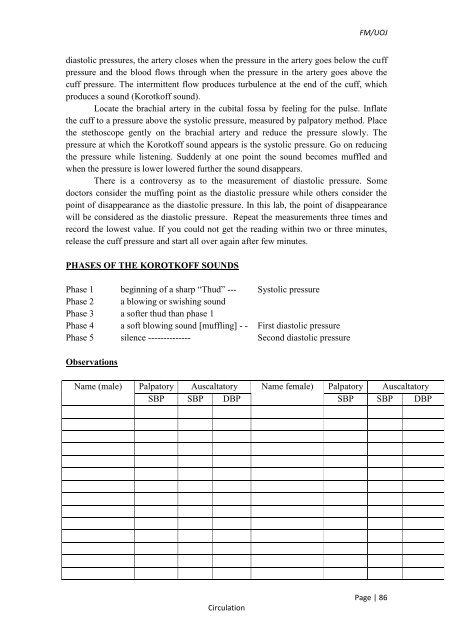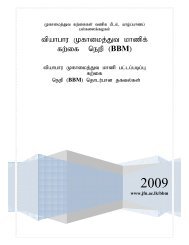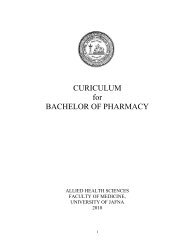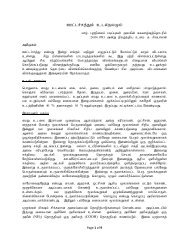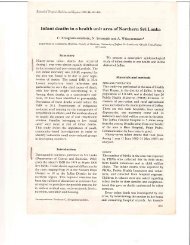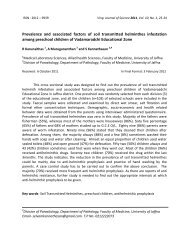MANUAL PHYSIOLOGY PRACTICAL - Repository:The Medical ...
MANUAL PHYSIOLOGY PRACTICAL - Repository:The Medical ...
MANUAL PHYSIOLOGY PRACTICAL - Repository:The Medical ...
You also want an ePaper? Increase the reach of your titles
YUMPU automatically turns print PDFs into web optimized ePapers that Google loves.
FM/UOJ<br />
diastolic pressures, the artery closes when the pressure in the artery goes below the cuff<br />
pressure and the blood flows through when the pressure in the artery goes above the<br />
cuff pressure. <strong>The</strong> intermittent flow produces turbulence at the end of the cuff, which<br />
produces a sound (Korotkoff sound).<br />
Locate the brachial artery in the cubital fossa by feeling for the pulse. Inflate<br />
the cuff to a pressure above the systolic pressure, measured by palpatory method. Place<br />
the stethoscope gently on the brachial artery and reduce the pressure slowly. <strong>The</strong><br />
pressure at which the Korotkoff sound appears is the systolic pressure. Go on reducing<br />
the pressure while listening. Suddenly at one point the sound becomes muffled and<br />
when the pressure is lower lowered further the sound disappears.<br />
<strong>The</strong>re is a controversy as to the measurement of diastolic pressure. Some<br />
doctors consider the muffing point as the diastolic pressure while others consider the<br />
point of disappearance as the diastolic pressure. In this lab, the point of disappearance<br />
will be considered as the diastolic pressure. Repeat the measurements three times and<br />
record the lowest value. If you could not get the reading within two or three minutes,<br />
release the cuff pressure and start all over again after few minutes.<br />
PHASES OF THE KOROTKOFF SOUNDS<br />
Phase 1 beginning of a sharp “Thud” --- Systolic pressure<br />
Phase 2 a blowing or swishing sound<br />
Phase 3 a softer thud than phase 1<br />
Phase 4 a soft blowing sound [muffling] - - First diastolic pressure<br />
Phase 5 silence -------------- Second diastolic pressure<br />
Observations<br />
Name (male) Palpatory Auscaltatory Name female) Palpatory Auscaltatory<br />
SBP SBP DBP SBP SBP DBP<br />
Circulation<br />
Page | 86


